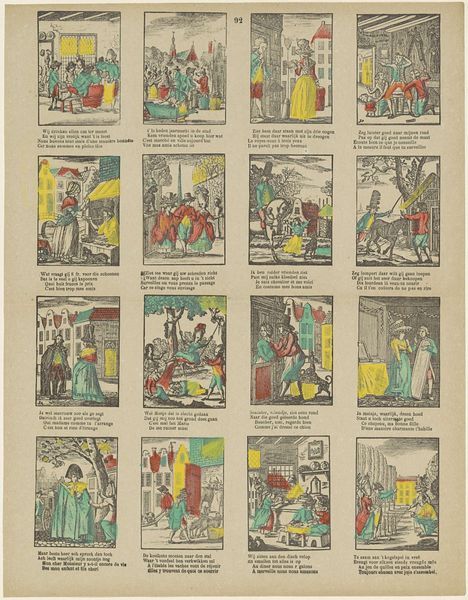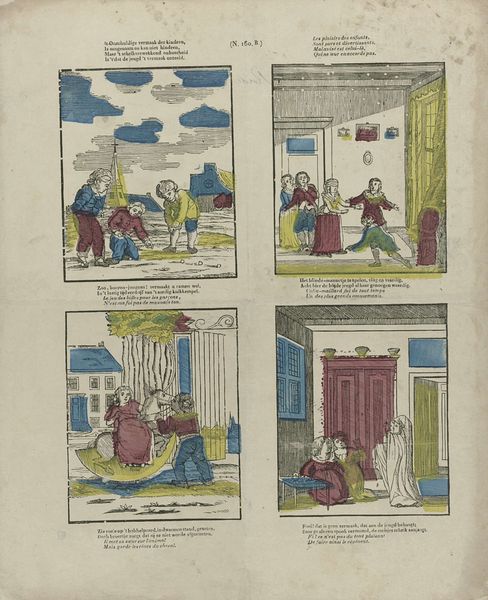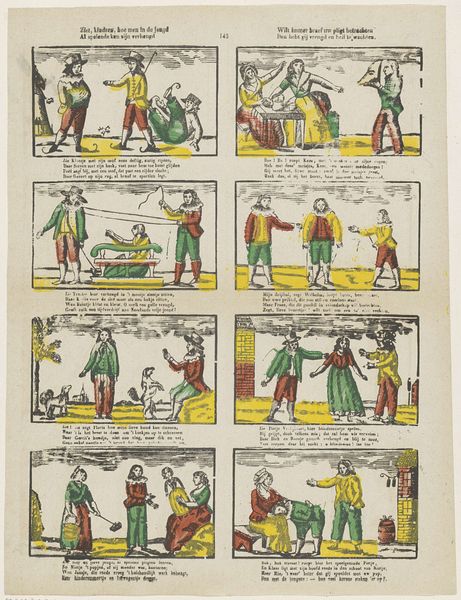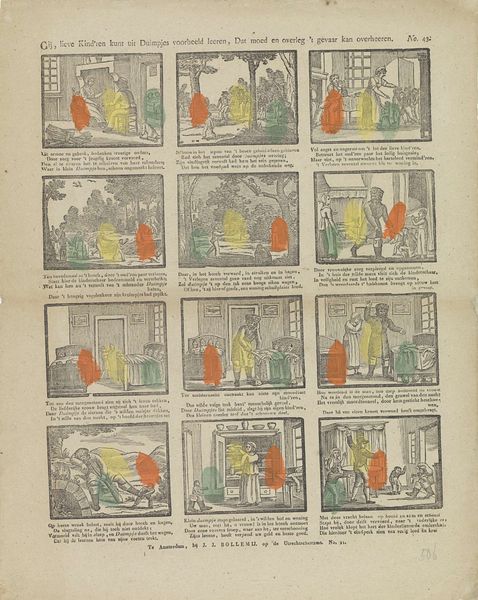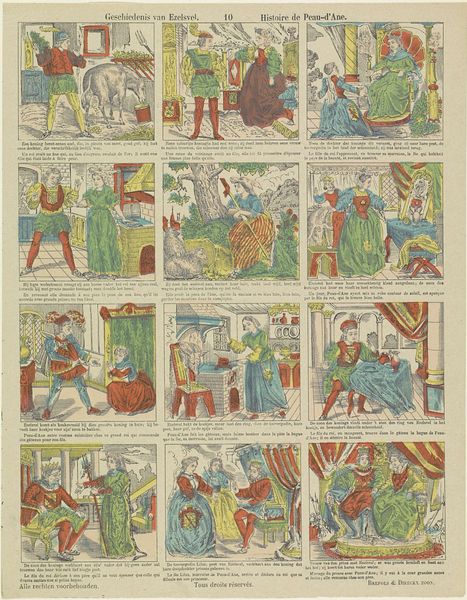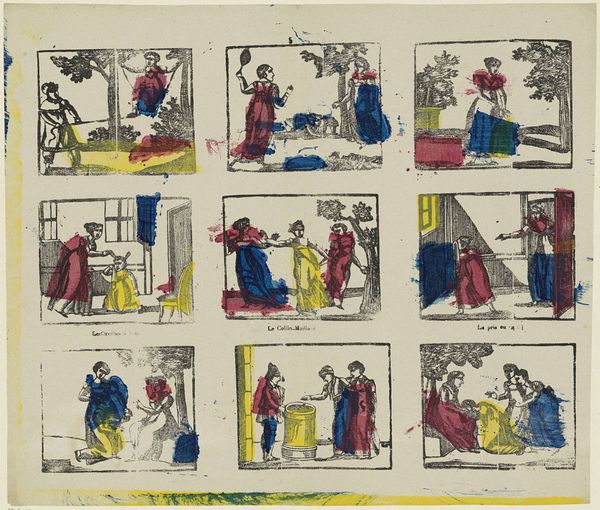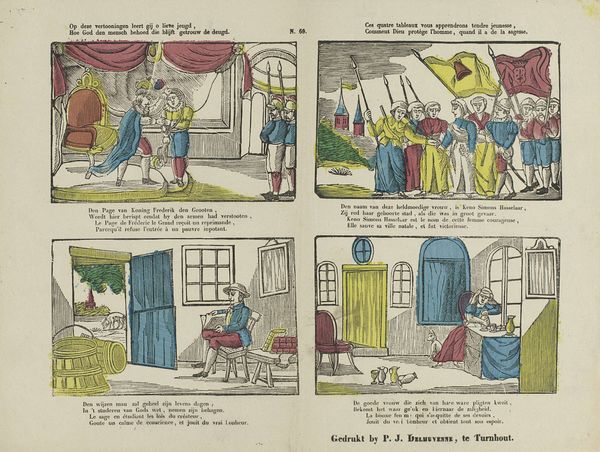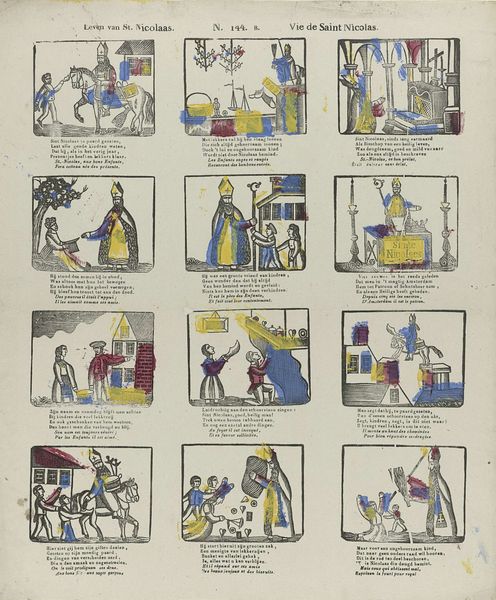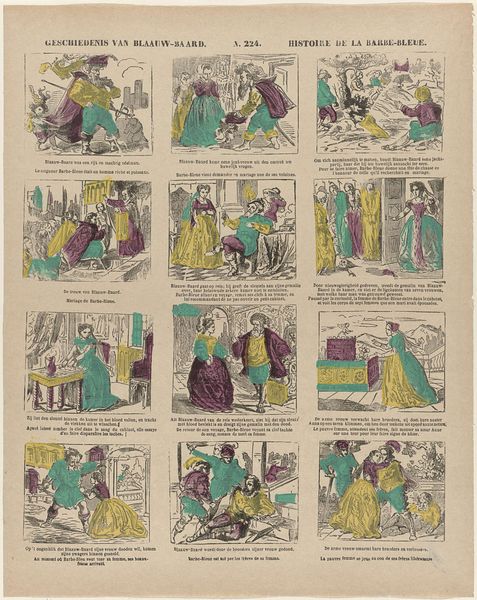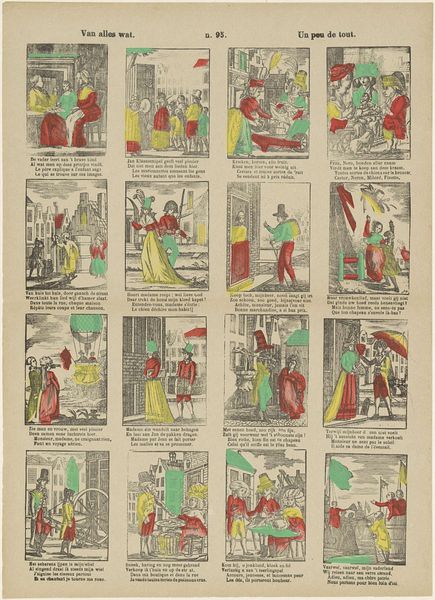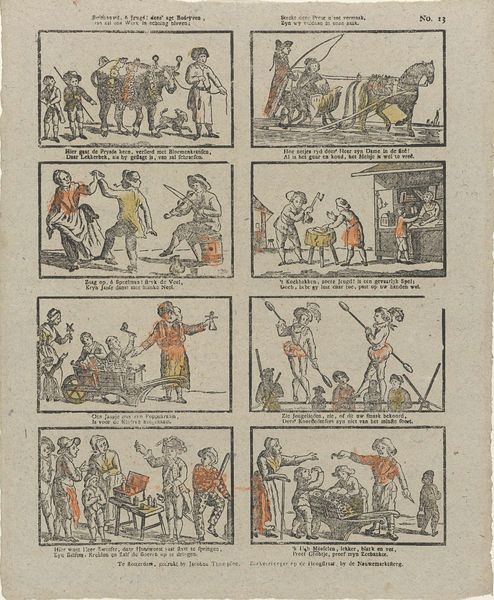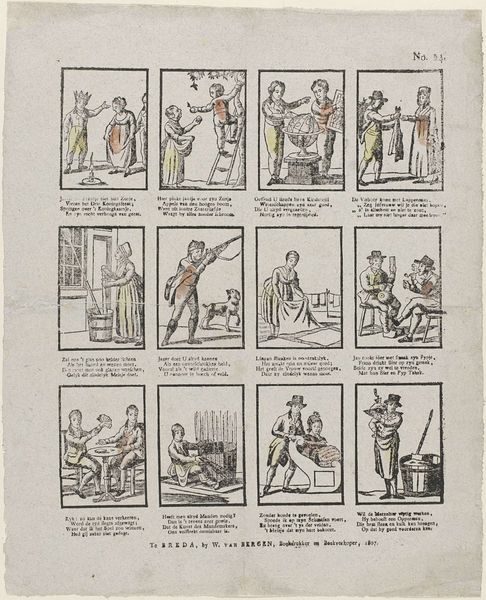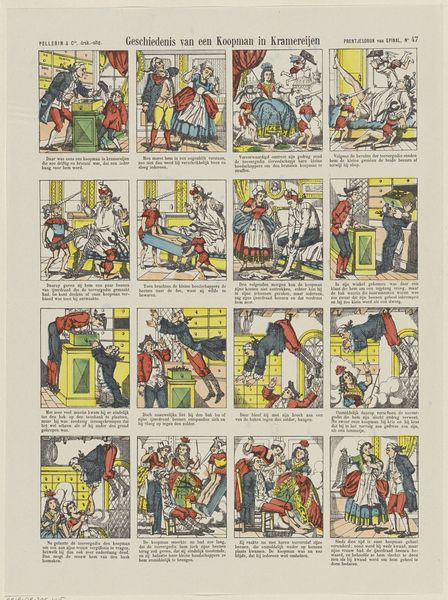
The Ghost Castle (after Oscar Wilde) (Das Gespensterschloß (nach Oskar Wilde)) 1911
0:00
0:00
drawing, print, paper, ink
#
drawing
#
art-nouveau
# print
#
paper
#
ink
#
comic
#
symbolism
Dimensions: Sheet: 5 1/2 × 3 9/16 in. (14 × 9 cm)
Copyright: Public Domain
Curator: So, tell me your initial thoughts about Moriz Jung's 1911 print, "The Ghost Castle (after Oscar Wilde)." What strikes you about it? Editor: Well, it’s a drawing printed on paper using ink. It’s really weirdly comic, I mean the text even says "all right!", and obviously intends for the modern viewer to laugh a bit. Yet there is all that imagery like dripping blood, spiders, and haunted castles... it seems almost like a Victorian graphic novel or something. How do we contextualize something like this, particularly given its ties to Oscar Wilde? Curator: That’s a brilliant observation. Considering the era and its relationship to Wilde, think about the social and cultural landscape. Wilde's works often challenged societal norms, particularly around morality and respectability. Could this artwork be interpreted as a commentary on the anxieties surrounding those shifting values in early 20th-century Europe? Notice the explicit commercialization of a once "horrific" landscape -- and indeed consider the fact that this cartoon appears to be something akin to an advertisement. Editor: Hmm, that’s a good point. I hadn’t really thought about it that way. I guess I was so focused on the comical style and the juxtaposition of scary and humorous. The characters certainly look like a cast out of caricature or comedic theater, but their appearance is likely quite critical too! What about the text - "They moved in, and after a while, this Windrow Mauff" and so on -- it's bizarre. Curator: Absolutely! Language itself becomes a playground here. How does that bizarre approach shape your perception of its message? Editor: It highlights the absurdity, like a satirical take on the ghost story genre and perhaps society's obsession with both the macabre and the novel, all the while commercializing what was previously taboo, through the invocation of "soap" and New York "tourists." I'd never have picked up on these ideas myself, but the print itself contains several "advertisement like" words... Curator: And so, the artwork uses humor and caricature not merely for entertainment but as a lens through which to critique broader social phenomena of that time. Next?
Comments
No comments
Be the first to comment and join the conversation on the ultimate creative platform.
